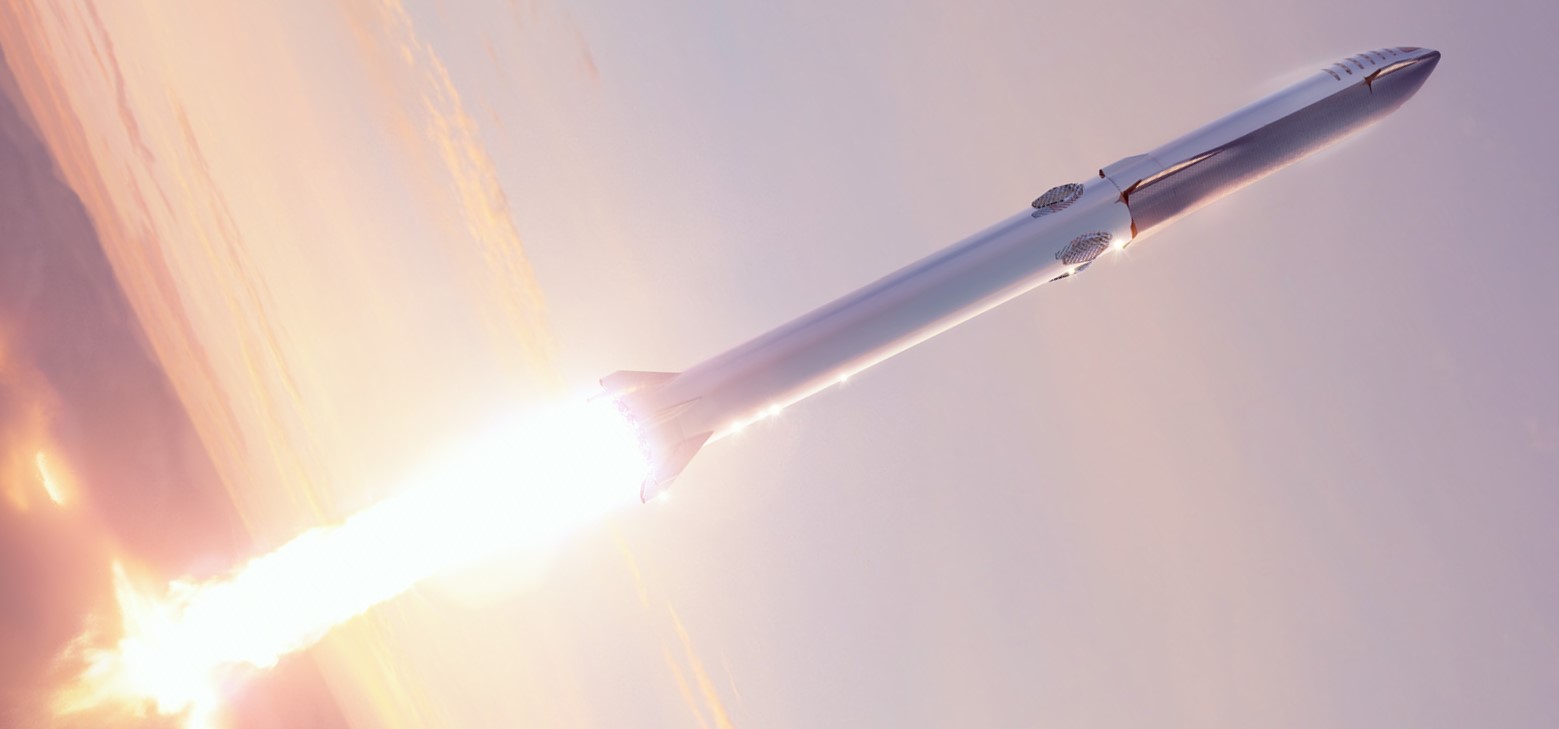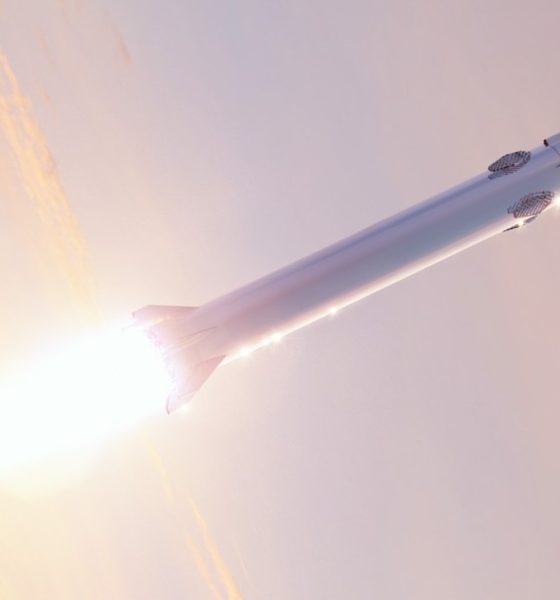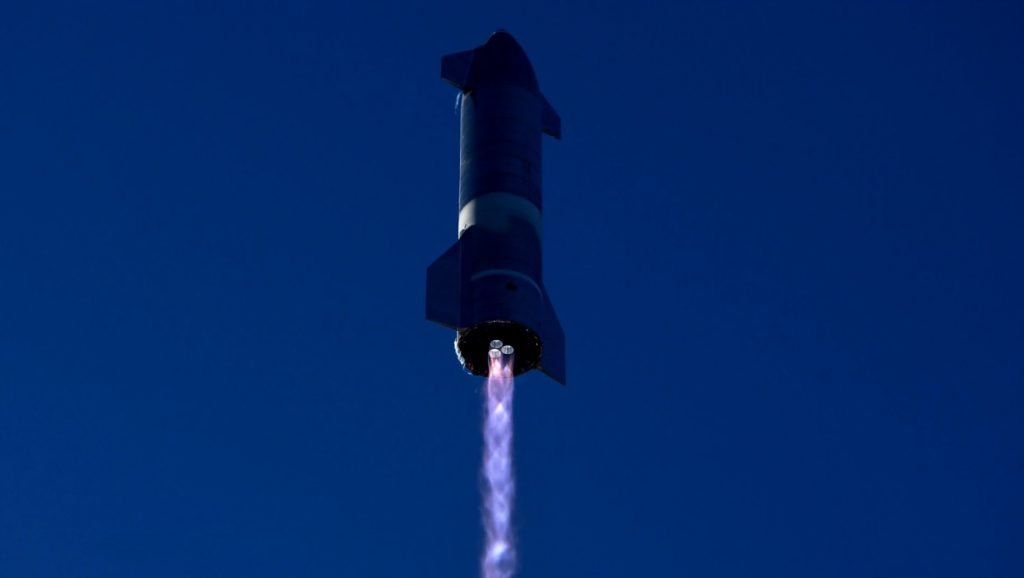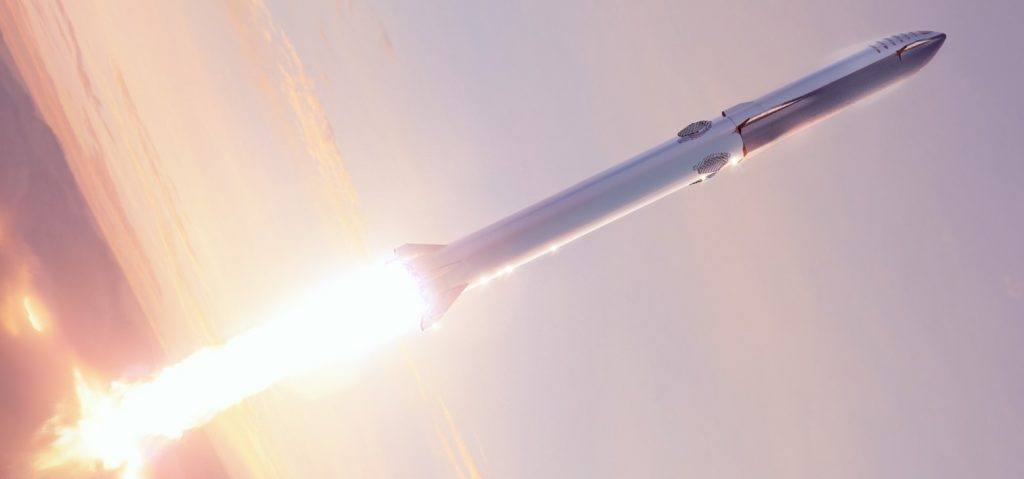

News
SpaceX teases progress towards Starship’s orbital launch debut
A recorded address from SpaceX President and COO Gwynne Shotwell to a graduating class of college seniors unexpectedly teased progress building the 35 Raptor engines that will power Starship’s imminent orbital launch attempt.
In a seemingly calculated move, the famous SpaceX executive’s prerecorded address included a glimpse of a screen on the factory floor tasked with tracking progress towards Starship’s first “orbital launch.” Featuring a basic graphic clearly depicting the aft ends of a Starship upper stage and Super Heavy booster, the display ultimate indicated that SpaceX has already “shipped” at least 11 of the almost three-dozen Raptor engines needed for the combined rocket’s first launch attempt.
Just three months ago, SpaceX CEO Elon Musk confirmed well-sourced reports from NASASpaceflight.com that the company was aiming to attempt Starship’s first orbital launch no later than July 2021. Two months later, regulatory documents revealed more concrete details for said launch attempt, indicating that Starship and Super Heavy’s first combined launch would see the ship spend some 80 minutes in space before reentering and splashing down off the coast of Hawai’i.
Not long after, Musk revealed that SpaceX boosted Super Heavy’s engine count from 28 to 29 and implied that even the first few orbital launch attempts would use a full complement of 29 engines. Combined with Starship’s three sea level and three vacuum-optimized Raptors and indications that the first one or more orbital-class ships and boosters will be expended without any recovery attempt, it became clear that SpaceX would need to radically expand Raptor production to meet such unprecedented demand for engines.


All told, SpaceX will need to manufacture, qualify, and deliver at least 35 Raptor engines to fully outfit every Starship and Super Heavy pair. If initial test flights are meant to expend both stages, that already exceptional challenge expands to require 35 engines for every launch attempt. Eventually, SpaceX’s goal is to manufacture hundreds of Raptor engines per year to outfit dozens of Starships and Super Heavy boosters, but Raptor only began full-scale integrated ground testing a little over two years ago.
Despite the challenges, SpaceX appears to be more than up to them and the display Shotwell walked past within the last month or two suggests that the company’s main Hawthorne, California factory has already “shipped” almost a third of the engines required for Starship’s inaugural orbital test flight. In this case, “shipped” likely means that those 11 engines have left the factory and headed to McGregor, Texas to be cleared for flight.
Several may already have made it through qualification testing and been delivered to Boca Chica – in fact, two new engines arrived at SpaceX’s Starship factory just last weekend. However, the rapid-fire arrival of dozens of Raptors will be unlike anything yet seen in Boca Chica. Altogether, SpaceX has sent a total of 30-35 Raptors to Boca Chica in the last two years. In the runup to Starship’s first orbital launch attempt, possibly as early Q3 2021, SpaceX will need to deliver ~35 Raptors in two months – an unprecedented influx of engines that will be easily tracked by the public.
Perhaps the most intriguing part of SpaceX’s calculated Starship launch teaser is the presence of a 25-day countdown, indicating that something is supposed to happen within the next two to four weeks. Given the display’s focus on “engines shipped,” the timer is likely counting down to an internal shipment target for the mission’s 35th and final engine. If SpaceX hits that target and Shotwell’s class address was recorded within the last week or so, all 35 orbital test flight Raptors could feasibly leave the factory floor by the end of the first full week of July, leaving a few weeks to finish qualification testing and ship each engine to Boca Chica before the end of the month.
If SpaceX can clear all 35 Raptors for flight by the end of July, it’s plausible that clean qualification testing could leave the first orbital-class Starship and Super Heavy booster ready for their launch debut in August or September – and almost certainly before the end of the year.

News
Man credits Grok AI with saving his life after ER missed near-ruptured appendix
The AI flagged some of the man’s symptoms and urged him to return to the ER immediately and demand a CT scan.

A 49-year-old man has stated that xAI’s Grok ended up saving his life when the large language model identified a near-ruptured appendix that his first ER visit dismissed as acid reflux.
After being sent home from the ER, the man asked Grok to analyze his symptoms. The AI flagged some of the man’s symptoms and urged him to return immediately and demand a CT scan. The scan confirmed that something far worse than acid reflux was indeed going on.
Grok spotted what a doctor missed
In a post on Reddit, u/Tykjen noted that for 24 hours straight, he had a constant “razor-blade-level” abdominal pain that forced him into a fetal position. He had no fever or visible signs. He went to the ER, where a doctor pressed his soft belly, prescribed acid blockers, and sent him home.
The acid blockers didn’t work, and the man’s pain remained intense. He then decided to open a year-long chat he had with Grok and listed every detail that he was experiencing. The AI responded quickly. “Grok immediately flagged perforated ulcer or atypical appendicitis, told me the exact red-flag pattern I was describing, and basically said “go back right now and ask for a CT,” the man wrote in his post.
He copied Grok’s reasoning, returned to the ER, and insisted on the scan. The CT scan ultimately showed an inflamed appendix on the verge of rupture. Six hours later, the appendix was out. The man said the pain has completely vanished, and he woke up laughing under anesthesia. He was discharged the next day.
How a late-night conversation with Grok got me to demand the CT scan that saved my life from a ruptured appendix (December 2025)
byu/Tykjen ingrok
AI doctors could very well be welcomed
In the replies to his Reddit post, u/Tykjen further explained that he specifically avoided telling doctors that Grok, an AI, suggested he get a CT scan. “I did not tell them on the second visit that Grok recommended the CT scan. I had to lie. I told them my sister who’s a nurse told me to ask for the scan,” the man wrote.
One commenter noted that the use of AI in medicine will likely be welcomed, stating that “If AI could take doctors’ jobs one day, I will be happy. Doctors just don’t care anymore. It’s all a paycheck.” The Redditor replied with, “Sadly yes. That is what it felt like after the first visit. And the following night could have been my last.”
Elon Musk has been very optimistic about the potential of robots like Tesla Optimus in the medical field. Provided that they are able to achieve human-level articulation in their hands, and Tesla is able to bring down their cost through mass manufacturing, the era of AI-powered medical care could very well be closer than expected.
News
Tesla expands Model 3 lineup in Europe with most affordable variant yet
The Model 3 Standard still delivers more than 300 miles of range, potentially making it an attractive option for budget-conscious buyers.

Tesla has introduced a lower-priced Model 3 variant in Europe, expanding the lineup just two months after the vehicle’s U.S. debut. The Model 3 Standard still delivers more than 300 miles (480 km) of range, potentially making it an attractive option for budget-conscious buyers.
Tesla’s pricing strategy
The Model 3 Standard arrives as Tesla contends with declining registrations in several countries across Europe, where sales have not fully offset shifting consumer preferences. Many buyers have turned to options such as Volkswagen’s ID.3 and BYD’s Atto 3, both of which have benefited from aggressive pricing.
By removing select premium finishes and features, Tesla positioned the new Model 3 Standard as an “ultra-low cost of ownership” option of its all-electric sedan. Pricing comes in at €37,970 in Germany, NOK 330,056 in Norway, and SEK 449,990 in Sweden, depending on market. This places the Model 3 Standard well below the “premium” Model 3 trim, which starts at €45,970 in Germany.
Deliveries for the Standard model are expected to begin in the first quarter of 2026, giving Tesla an entry-level foothold in a segment that’s increasingly defined by sub-€40,000 offerings.
Tesla’s affordable vehicle push
The low-cost Model 3 follows October’s launch of a similarly positioned Model Y variant, signaling a broader shift in Tesla’s product strategy. While CEO Elon Musk has moved the company toward AI-driven initiatives such as robotaxis and humanoid robots, lower-priced vehicles remain necessary to support the company’s revenue in the near term.
Reports have indicated that Tesla previously abandoned plans for an all-new $25,000 EV, with the company opting to create cheaper versions of existing platforms instead. Analysts have flagged possible cannibalization of higher-margin models, but the move aims to counter an influx of aggressively priced entrants from China and Europe, many of which sell below $30,000. With the new Model 3 Standard, Tesla is reinforcing its volume strategy in Europe’s increasingly competitive EV landscape.
News
Tesla FSD (Supervised) stuns Germany’s biggest car magazine
FSD Supervised recognized construction zones, braked early for pedestrians, and yielded politely on narrow streets.

Tesla’s upcoming FSD Supervised system, set for a European debut pending regulatory approval, is showing notably refined behavior in real-world testing, including construction zones, pedestrian detection, and lane changes, as per a recent demonstration ride in Berlin.
While the system still required driver oversight, its smooth braking, steering, and decision-making illustrated how far Tesla’s driver-assistance technology has advanced ahead of a potential 2026 rollout.
FSD’s maturity in dense city driving
During the Berlin test ride with Auto Bild, Germany’s largest automotive publication, a Tesla Model 3 running FSD handled complex traffic with minimal intervention, autonomously managing braking, acceleration, steering, and overtaking up to 140 km/h. It recognized construction zones, braked early for pedestrians, and yielded politely on narrow streets.
Only one manual override was required when the system misread a converted one-way route, an example, Tesla stated, of the continuous learning baked into its vision-based architecture.
Robin Hornig of Auto Bild summed up his experience with FSD Supervised with a glowing review of the system. As per the reporter, FSD Supervised already exceeds humans with its all-around vision. “Tesla FSD Supervised sees more than I do. It doesn’t get distracted and never gets tired. I like to think I’m a good driver, but I can’t match this system’s all-around vision. It’s at its best when both work together: my experience and the Tesla’s constant attention,” the journalist wrote.
Tesla FSD in Europe
FSD Supervised is still a driver-assistance system rather than autonomous driving. Still, Auto Bild noted that Tesla’s 360-degree camera suite, constant monitoring, and high computing power mark a sizable leap from earlier iterations. Already active in the U.S., China, and several other regions, the system is currently navigating Europe’s approval pipeline. Tesla has applied for an exemption in the Netherlands, aiming to launch the feature through a free software update as early as February 2026.
What Tesla demonstrated in Berlin mirrors capabilities already common in China and the U.S., where rival automakers have rolled out hands-free or city-navigation systems. Europe, however, remains behind due to a stricter certification environment, though Tesla is currently hard at work pushing for FSD Supervised’s approval in several countries in the region.








